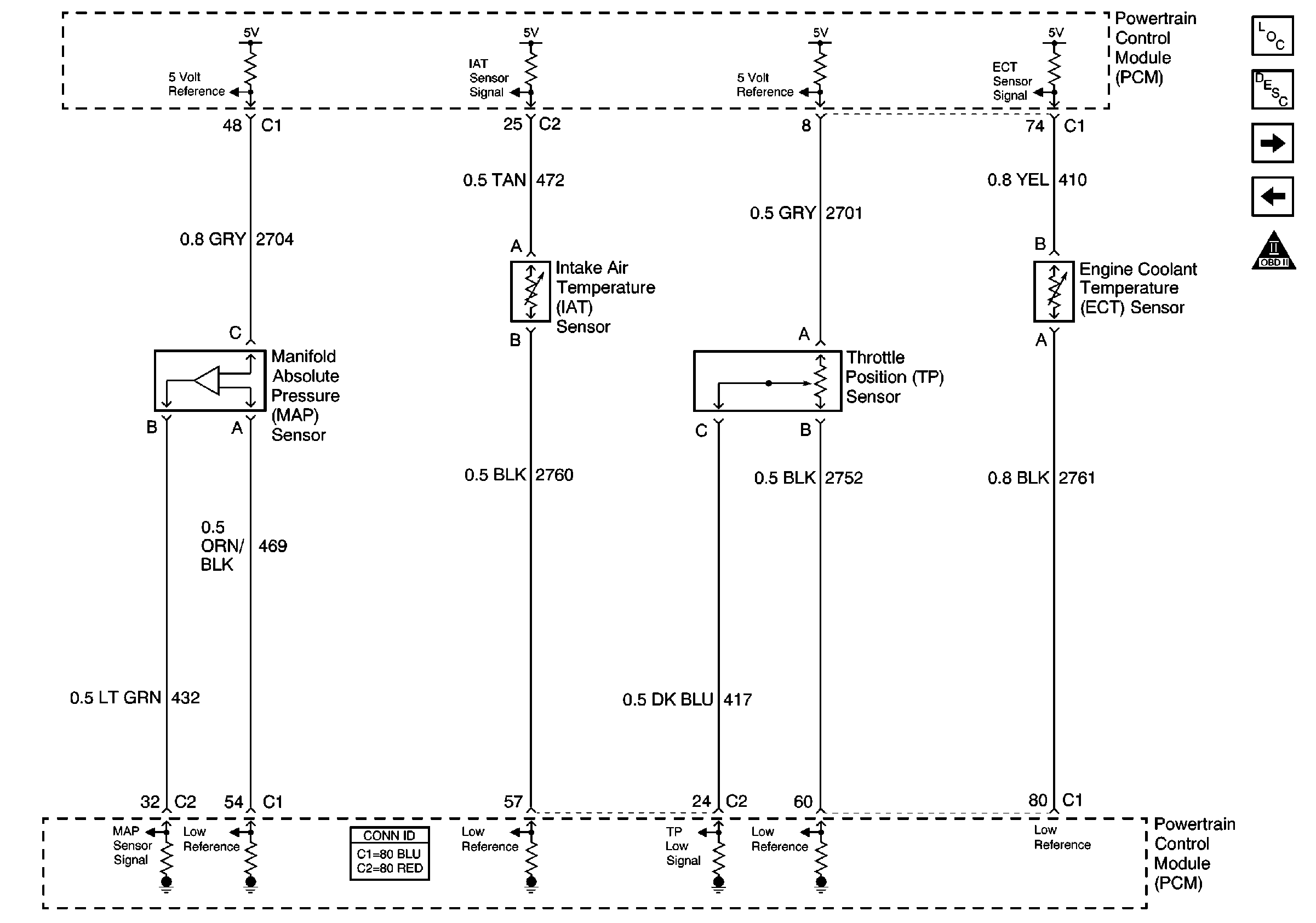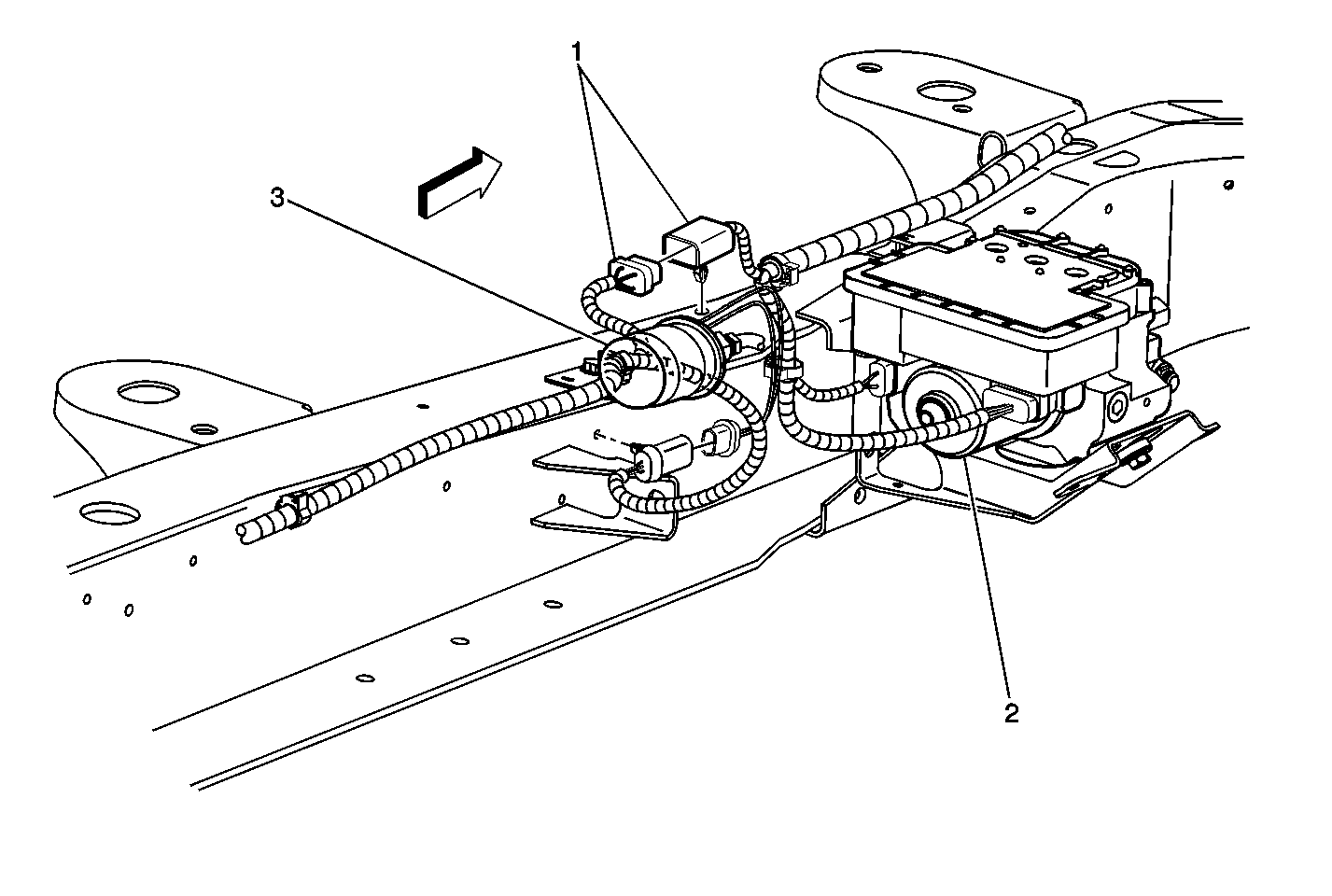Circuit Description
The powertrain control module (PCM) monitors the fuel tank pressure (FTP) sensor signal in order to detect vacuum decay and excess vacuum during the enhanced evaporative emission (EVAP) diagnostic. The PCM supplies a 5-volt reference and ground to the sensor. The FTP sensor signal voltage increases as the fuel tank pressure decreases (negative pressure or vacuum, high voltage). The FTP sensor signal voltage decreases as the fuel tank pressure increases (positive pressure, low voltage). This DTC sets when the FTP sensor signal voltage goes above a predetermined value.
Conditions for Running the DTC
The engine is running
Conditions for Setting the DTC
| • | The fuel tank pressure sensor voltage is more than 4.9 volts |
| • | All conditions present for greater than 5 seconds |
Action Taken When the DTC Sets
| • | The control module illuminates the malfunction indicator lamp (MIL) on the second consecutive ignition cycle that the diagnostic runs and fails. |
| • | The control module records the operating conditions at the time the diagnostic fails. The first time the diagnostic fails, the control module stores this information in the Failure Records. If the diagnostic reports a failure on the second consecutive ignition cycle, the control module records the operating conditions at the time of the failure. The control module writes the operating conditions to the Freeze Frame and updates the Failure Records. |
Conditions for Clearing the MIL/DTC
| • | The control module turns OFF the malfunction indicator lamp (MIL) after 3 consecutive ignition cycles that the diagnostic runs and does not fail. |
| • | A current DTC, Last Test Failed, clears when the diagnostic runs and passes. |
| • | A history DTC clears after 40 consecutive warm-up cycles, if no failures are reported by this or any other emission related diagnostic. |
| • | Clear the MIL and the DTC with a scan tool. |
Test Description
The number below refers to the step numbers on the diagnostic table.
Step | Action | Values | Yes | No | ||||||
|---|---|---|---|---|---|---|---|---|---|---|
Schematic Reference:
| ||||||||||
1 | Did you perform the Diagnostic System Check-Engine Controls? | -- | Go to Step 2 | |||||||
Did DTC P1635 and P1639 fail this ignition? | -- | Go to DTC P1635 | Go to Step 3 | |||||||
3 |
Is the FTP sensor voltage more than the specified value? | 4.3 volts | Go to Step 5 | Go to Step 4 | ||||||
4 |
Does the DTC fail this ignition? | -- | Go to Step 5 | Go to Intermittent Conditions | ||||||
5 |
Does the scan tool indicate that the FTP sensor voltage is greater than the specified value? | 0.0 volts | Go to Step 6 | Go to Step 7 | ||||||
6 | Test the signal circuit of the FTP sensor for a short to voltage between the fuel tank harness connector and the PCM. Refer to Circuit Testing and Wiring Repairs in Wiring Systems. Did you find and correct the condition? | -- | Go to Step 13 | Go to Step 10 | ||||||
7 | Probe the low reference circuit of the FTP sensor at the fuel tank harness connector with a test lamp connected to battery voltage. Refer to Circuit Testing in Wiring Systems. Did the test lamp illuminate? | -- | Go to Step 9 | Go to Step 8 | ||||||
8 | Test the low reference circuit of the FTP sensor for an open between the fuel tank harness connector and the PCM. Refer to Circuit Testing and Wiring Repairs in Wiring Systems. Did you find and correct the condition? | -- | Go to Step 13 | Go to Step 10 | ||||||
9 |
Did you find and correct the condition? | -- | Go to Step 13 | Go to Step 11 | ||||||
10 | Inspect for poor connections at the harness connector of the PCM . Refer to Testing for Intermittent and Poor Connections and Connector Repairs in Wiring Systems. Did you find and correct the condition? | -- | Go to Step 13 | Go to Step 12 | ||||||
11 | Replace the FTP sensor. Refer to Fuel Tank Pressure Sensor Replacement . Did you complete the replacement? | -- | Go to Step 13 | -- | ||||||
12 | Replace the PCM. Refer to Powertrain Control Module Replacement . Did you complete the replacement? | -- | Go to Step 13 | -- | ||||||
13 |
Does the DTC run and pass? | -- | Go to Step 14 | Go to Step 2 | ||||||
14 | With a scan tool, observe the stored information, Capture Info. Does the scan tool display any DTCs that you have not diagnosed? | -- | System OK | |||||||


